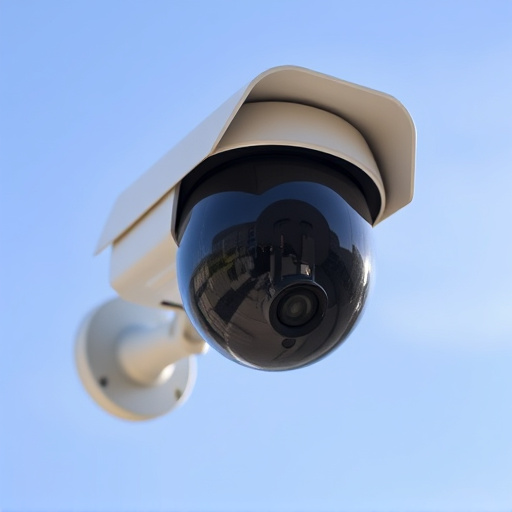Dummy security cameras, placed strategically in high-risk areas like entry points and valuable asset locations, act as powerful psychological deterrents against crime without requiring functional surveillance systems. Their optimal deployment involves balancing crime prevention with privacy rights, focusing on visible best locations, avoiding private spaces, and prominently displaying signs. Using deceptive methods, like placing them in corners and incorporating realistic mockups, enhances their effectiveness. Regular updates and repositioning further deter potential criminals, making dummy cameras a successful security tactic across diverse settings.
“Enhance your home or business security with strategic fake security camera placement. This comprehensive guide explores the art of utilizing dummy cameras as a powerful deterrent. From understanding human behavior and legal aspects to best practices, we reveal the secrets behind effective visual deception. Discover optimal locations like entry points, visible areas, and common hiding spots to maximize their impact. Case studies showcase successful implementations, offering valuable insights for anyone looking to fortify their security measures with these clever devices.”
- Understanding the Psychology Behind Dummy Cameras
- Legal and Ethical Considerations for Placement
- Best Practices for Visually Deceptive Placement
- Case Studies: Effective Dummy Camera Setups
Understanding the Psychology Behind Dummy Cameras
Understanding the Psychology Behind Dummy Cameras
Dummy security cameras, despite their lack of functional capability, serve as a powerful psychological deterrent against potential criminals. Their mere presence can significantly impact an individual’s behavior, leading them to believe they are being watched. This perception creates a sense of accountability and acts as a strong barrier against illegal activities. By strategically placing dummy cameras in the best locations, individuals and businesses can enhance their security measures without the need for expensive surveillance systems.
The best locations for dummy security cameras often mirror real camera placements. High-risk areas such as entry points, windows, and valuable asset locations are ideal spots. Additionally, visible dummy cameras near signs indicating their presence can further deter criminals from attempting any malicious activities. This tactic is particularly effective in deterring vandalism, theft, and other property crimes.
Legal and Ethical Considerations for Placement
When strategizing dummy security camera placement, it’s crucial to balance effective deterrence with legal and ethical boundaries. While these cameras can be excellent tools for crime prevention, their strategic use must respect privacy rights and avoid deception. Placement should focus on visible best locations for dummy security cameras, clearly signaling enhanced surveillance without violating personal or public spaces.
Key considerations include local laws regarding surveillance equipment and consent for monitoring. Cameras should not be placed in areas where they invade privacy, such as bedrooms or bathrooms, without explicit permission. Public spaces require careful navigation too; signs indicating camera presence are essential to ensure transparency and avoid misleading residents or visitors. Ethical use involves proportionality – the cameras’ placement should align with the potential risks and benefits for the specific location.
Best Practices for Visually Deceptive Placement
When planning visually deceptive placement of dummy security cameras, consider areas that offer a clear line of sight while maintaining a discreet appearance. Best locations often include corners and high points, such as ceilings or tall shelves, where the camera’s lens can capture a wide area without being readily visible. Strategically placing these dummy cameras in plain sight but hidden from direct view can deter potential criminals effectively.
In addition to height and angle, incorporate realistic-looking mockups that mimic real security equipment. Using weatherproof housings and reflective lenses can enhance the deception, making it harder for intruders to discern between genuine and fake surveillance devices. Regularly updating and repositioning these dummy cameras also adds an extra layer of unpredictability, keeping would-be criminals on their toes.
Case Studies: Effective Dummy Camera Setups
In the realm of security camera placement, dummy setups have emerged as a strategic game changer. Case studies demonstrate that strategically positioning fake cameras can significantly deter crime and enhance overall security. Best locations for dummy security cameras include high-traffic areas such as entrances, exits, and common gathering points. These visible yet inoperable devices send a strong message to potential intruders, acting as a psychological deterrent.
Additionally, dummy cameras can be effectively deployed near valuable assets or sensitive areas that require heightened surveillance. By mimicking the appearance of real security equipment, they create the perception of enhanced monitoring, even if they lack functional capabilities. This tactic has proven successful in various settings, from commercial properties to residential neighborhoods, where it fosters a sense of safety and security.
In conclusion, dummy security cameras, when strategically placed, can serve as an effective deterrent and enhance real surveillance systems. By understanding human behavior, legal boundaries, and ethical practices, individuals and businesses can leverage the power of visual deception at optimal best locations for dummy security cameras. Incorporating these strategies into security plans not only deters crime but also reinforces a sense of safety and security.
